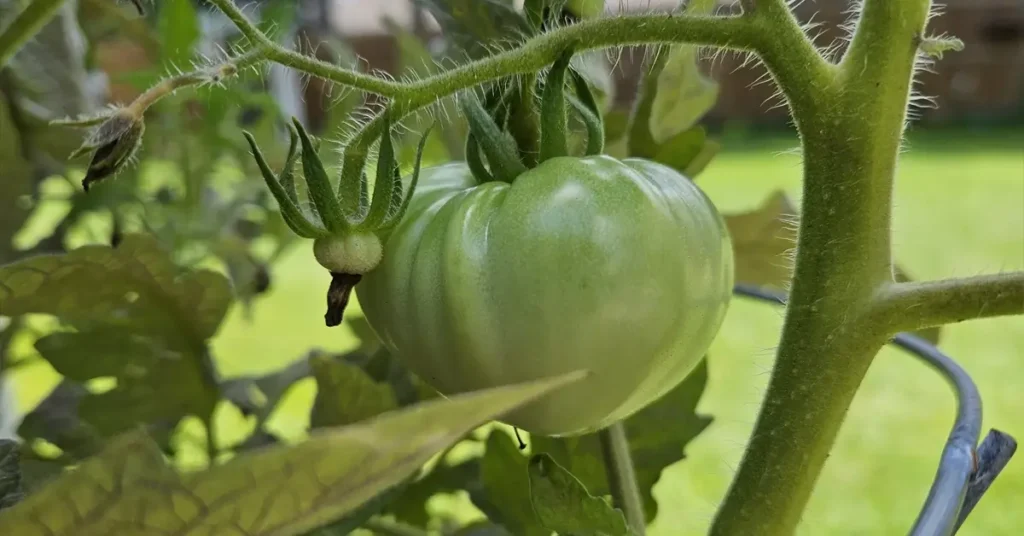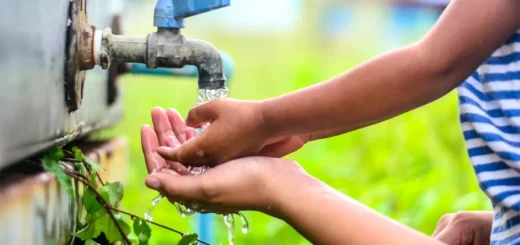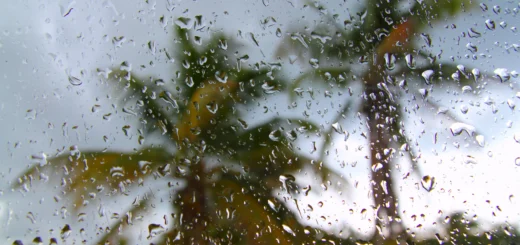Prepping 101: A Complete Beginner’s Guide

Introduction To Prepping 101
Hey there, fellow preppers! Ready to dive into the world of preparedness and start gathering those essential supplies? Well, you’ve come to the right place! In this Southern Prepper Magazine‘s Beginners Guide for Preppers, we’re gonna break it down for you, no fancy jargon or complicated stuff. Just straightforward tips, and personal experiences.
Table of Contents
What is Prepping?
Prepping, short for “preparing,” involves making necessary arrangements and gathering supplies to be ready for potential emergencies or disasters. It encompasses being proactive and taking responsible steps to ensure the safety and well-being of oneself and one’s family in times of crisis.
Prepping is not about living in fear, but rather about being prepared and equipped for any unforeseen circumstances that may arise.
Prepping covers a range of situations, including natural disasters like hurricanes or flooding, as well as man-made disasters such as power outages, economic collapse, or civil unrest. It entails stockpiling essential supplies such as food, water, and medical necessities, as well as acquiring survival skills like first aid, self-defense, and wilderness survival.
Some preppers may also consider investing in alternative energy sources or constructing bunkers to provide added protection in the event of a catastrophic incident.
The concept of prepping has been around for a long time and can be traced back to various sources. It is not attributed to a specific individual or group.
Throughout history, communities and individuals have recognized the importance of being prepared for unexpected events and have developed practices to ensure their survival and well-being in times of crisis.
1. Survival and self-sufficiency skills: Prepping draws inspiration from traditional survival and self-sufficiency practices that have been employed by individuals and communities for centuries. These skills include hunting, foraging, food preservation, gardening, and building shelters.
2. Military and emergency response organizations: The preparedness mindset can also be seen in military organizations and emergency response agencies. These groups emphasize the importance of readiness, training, and having supplies and plans in place to address potential crises or conflicts.
3. Homesteading and pioneer lifestyle: The pioneers and homesteaders of the past can be seen as early preppers in a sense. They relied on self-sufficiency, preparedness, and resourcefulness to establish their homes and survive in challenging environments.
4. Civil defense movements: During times of war or heightened geopolitical tensions, civil defense movements have emerged to encourage and educate the public about preparedness. These movements often provide guidelines for emergency supplies, evacuation procedures, and shelter construction.
5. Natural disasters and historical events: The experiences of communities affected by natural disasters or significant historical events have influenced the development of prepping practices. For example, regions prone to hurricanes, earthquakes, or other recurring disasters have fostered a culture of preparedness and resilience.
While these sources have contributed to the development of prepping, the modern concept of prepping as a distinct and organized movement has gained more prominence in recent years with the advent of the internet, social media, and increased awareness of potential risks and uncertainties.
In recent times, the idea of prepping has gained more attention and popularity, fueled by various factors such as natural disasters, global uncertainties, and the dissemination of information through media and the internet.
This has led to a broader awareness of the need for preparedness and a growing community of individuals who actively engage in prepping activities.
While prepping may be viewed as extreme or unnecessary by some, others see it as a responsible approach to ensuring their safety and well-being. Being prepared for emergencies is of utmost importance, as disasters can strike unexpectedly.
Whether it’s a natural disaster like a hurricane, a power outage, or a pandemic, having the necessary supplies and knowledge can help you and your family stay safe and comfortable.
Let’s explore the world of prepping together and equip ourselves with the knowledge and resources needed to face any challenges that may come our way. With preparedness as our guiding principle, we can navigate the unpredictable nature of life with confidence and resilience. Let’s embark on this journey of preparedness!
Prepping Supplies: Getting Started on Your Prepping Journey
Food
Let’s talk about everyone’s favorite topic—food! When it hits the fan, your tummy will rumble, and you’ll be glad you thought ahead. Stock up on non-perishable goodies like canned goods, dried foods, and freeze-dried meals. Mix it up, folks. Variety is the spice of life, even in an emergency. And don’t forget the snacks! Trust me, a little bag of comfort food can go a long way in lifting spirits during tough times.
One of the most critical aspects of prepping is ensuring you have at least 72 hours of food. When an emergency hits, access to food may become limited or even completely cut off. That’s why it’s essential to stock up on non-perishable food items (that your family enjoys) that can sustain you for at least the first 72 hours but ideally up to two weeks. Remember, to regularly rotate your food supply to maintain freshness and ensure you’re always prepared.
Water
When it comes to water, you gotta be prepared to stay hydrated. Start by stocking up on clean drinking water. Trust me, when the tap runs dry, you’ll be grateful you did. Aim for at least one gallon per person per day. Don’t forget to check the expiration dates and rotate that water to keep it fresh.
Water Storage: Start by storing an adequate amount of water for each person in your household. The general guideline is to have at least one gallon of water per person per day for drinking and sanitation purposes. This amount should cover both drinking water and water for cooking, hygiene, and cleaning.
Containers: Choose containers that are specifically designed for water storage. Consider using food-grade plastic containers, such as those made from high-density polyethylene (HDPE). Avoid containers that have previously held non-food items, as they may contaminate the water.
Rotation: Water storage requires regular maintenance to ensure freshness. Rotate your water supply every six months to one year. Use and replace the stored water, and refill the containers with fresh water.
Water Sources: In addition to stored water, it’s smart to identify alternative water sources in your area. These sources may include nearby lakes, rivers, or rainwater collection systems. However, be aware that you should always have purification and filtration before consumption from natural water sources.
Water Purification: In case your water supply becomes compromised or you need to rely on natural water sources, having water purification methods is crucial. Water filters, purifiers, and water purification tablets are effective tools to remove contaminants and pathogens from water, making it safe to drink. Follow the instructions provided with these products to ensure proper usage.
Hygiene and Sanitation: Remember that water is not only for drinking but also for personal hygiene and sanitation. It’s essential to maintain good hygiene practices, even during emergencies. Factor in having additional water for handwashing, cleaning dishes, and maintaining cleanliness in your surroundings.
Community Water Sources: Stay informed about community water sources, such as water distribution centers or emergency water supplies set up during disasters. Familiarize yourself with your local community emergency plans and resources to access clean water if needed.
Shelter In Place
Sheltering at home during an emergency is often the safest and most practical option. It allows you to remain in a familiar and comfortable environment while minimizing exposure to potential hazards outside.
Here are our top tips for sheltering in place during emergencies:
Emergency Supplies: It’s essential to have a well-stocked emergency supply kit readily available in your home. This kit should include essential items such as food, water, medications, flashlights, batteries, a first aid kit, and important documents. Customize your kit to meet the specific needs of your family, including any infants, elderly, or pets.
Create a Safe Space: Designate a safe room or area within your home where you can take shelter during emergencies. Ideally, choose an interior room on the ground floor, away from windows, and with sturdy walls. Reinforce the area with additional protection, such as heavy furniture or mattresses, to provide added safety.
Stay Informed: Keep a battery-powered or hand-crank radio in your shelter area to receive updates from local authorities and emergency services. Stay tuned to reliable news sources and follow official instructions and evacuation orders if necessary.
Secure Your Home: Regularly assess your home’s security and make necessary improvements to prevent potential damage during emergencies. Reinforce doors and windows, clear gutters and drains, and secure outdoor furniture or equipment that could become airborne in high winds.
Utilities and Services: Know how to shut off utilities such as gas, electricity, and water in case of emergencies. Keep necessary tools readily available for this purpose, and ensure that all family members know how to perform these shutdown procedures safely.
Communication Plan: Develop a communication plan with your family members in advance. Establish a designated point person outside the area who can serve as a central contact. Determine backup methods of communication, such as mobile apps or walkie-talkies, in case traditional communication channels are disrupted.
Basic First Aid Skills: Acquire basic first aid skills and knowledge to handle common injuries and medical emergencies. Take a first aid and CPR course to boost your preparedness level. Keep a comprehensive first aid kit in your shelter area and familiarize yourself with its contents and usage.
Psychological Well-being: Sheltering at home for an extended period can be emotionally challenging. Maintain a sense of routine, engage in calming activities, and provide support to family members. Keep books, games, and other forms of entertainment available to reduce stress and maintain a positive atmosphere.
Bugging Out
When a disaster strikes, you might find yourself needing to quickly evacuate your home (bug out) or seek temporary shelter. It’s vital to have a personal emergency readiness plan in place.
Evacuation Planning: While sheltering at home is generally the preferred option, there may be situations where evacuation becomes necessary. Have a clear evacuation plan in place, including designated meeting points, emergency routes, and transportation options. Ensure everyone in the family knows the plan and conduct practice drills periodically.
Self-Defense and Security for Beginners: Protecting Yourself with Confidence
When it comes to personal safety and security, it’s crucial to take steps to protect yourself and your loved ones. Let’s dive into some practical tips to keep you safe and sound.
First things first: situational awareness is key. Keep your eyes peeled, be alert, and trust your gut instincts. Avoid sketchy situations, steer clear of dark alleys, and stay aware of your surroundings. We’re talking about being a ninja of awareness here!
Now, let’s talk about self-defense. Learning some basic self-defense techniques can give you the confidence and skills to handle sticky situations. Consider taking a self-defense class taught by professionals who know their stuff.
When it comes to personal protection devices, options abound. Pepper spray, tasers, and personal alarms can provide an added layer of defense. Just make sure you’re familiar with local laws and regulations regarding their use. We want to stay on the right side of the law while keeping ourselves safe.
Home sweet home, right? Let’s fortify that castle of yours. Install security cameras to keep an eye on things, invest in motion sensor lights to scare away potential intruders, and make sure your doors and windows have sturdy locks. Oh, and don’t forget about a backup plan. Consider creating a safe room or identifying an alternative location where you and your family can retreat into should your home become compromised.
Team up with your neighbors to create a tight-knit community, (or at the very least try to have their full name and phone number). Get to know your neighbors and look out for each other. It will be easier to establish a security group during an emergency when you already know everyone’s name and a little bit about them. There’s strength in numbers, and a watchful community is a secure community.
Having a solid emergency plan is crucial. Sit down with your family, discuss escape routes, designate a meeting place in case you get separated, and make sure everyone knows who to call in an emergency. Being prepared and having a plan can make all the difference when chaos strikes.
First Aid and Medical Preparedness
Let’s talk about the importance of having your medical game on point. When it comes to emergencies, having basic first aid supplies and taking care of your medical needs is like having a superhero cape tucked away in your prepping toolkit. So let’s dive into the world of first aid and medical preparedness together!
First things first: gather essential first aid supplies. Bandages, antiseptics, pain relievers, and first aid manuals are your new best friends. They’ll help you patch up minor cuts and scrapes like a pro. And remember, to keep your supplies up to date. Check those expiration dates and replenish as needed.
But let’s not stop at band-aids and antiseptics. Think beyond the basics. Take a look at your personal medical needs. Do you have any prescription medications? Call your doctor or registered nurse to ask about an emergency 30 day supply.
Ensure you have an ample supply on hand to get you through at least two weeks because when the going gets tough, you don’t want to be without your vital medications.
Medicine Cabinet Must-Haves: You don’t need a pharmacy in your home, but a well-stocked medicine cabinet is a smart move. Have over-the-counter pain relievers, antihistamines for allergies, and some common cold and flu remedies. Just remember to check the expiration dates and rotate them out as needed.
Oh, and speaking of being prepared, keep copies of your medical records and important documents. You never know when you might need them, especially if you have to seek medical help outside the area of your usual healthcare provider.
First Aid Manuals and Apps: In the age of technology, we’ve got some nifty resources at our fingertips. Consider downloading a first aid app on your smartphone or keep a trusty first aid manual within reach. These guides can provide step-by-step instructions in case of emergencies. It’s like having a virtual doctor in your pocket!
It’s always best to seek professional medical advice for serious injuries or conditions. But having the basics covered and being able to provide immediate care in an emergency situation can make all the difference.
Remember, stay organized, keep those supplies up to date, and don’t forget to flex your prepper muscles when it comes to your medical needs.
Long-Term Prepping Strategies For Beginners
While short-term prepping gets us through immediate emergencies, long-term prepping is all about creating a sustainable lifestyle that can withstand extended periods of disruption.
One of the key components of long-term prepping is developing self-sufficiency when it comes to food. By growing your own fruits, vegetables, and herbs, you can create a sustainable source of nutrition right in your own backyard (or balcony if you’re short on space).
Master the Art of Gardening: Time to unleash your inner green thumb! Gardening is an art that takes time and practice to master. By starting your garden early, you give yourself the opportunity to learn and refine your skills gradually. You can experiment with different plants, observe their growth patterns, and learn how to nurture them effectively. What you don’t want is a crash course in gardening with the additional pressure of an emergency situation looming over you.
Growing your own food is not only rewarding but also an essential long-term prepping strategy. Start small with some herbs (basil, mint, lavender) or easy-to-grow vegetables (tomatoes, green onions, peppers) and gradually expand your garden.
You’ll be enjoying the fruits (and veggies) of your labor in no time. There’s nothing more satisfying about plucking a juicy tomato you grew straight from the vine.
To truly master long-term prepping, it’s important to learn about food preservation methods. Canning, dehydrating, and fermenting are your new best friends. These techniques allow you to store your garden goodies for an extended period, ensuring you have access to fresh and nutritious food even when the supermarket shelves are bare.
Harness the Power of Alternative Energy: In a long-term crisis, relying solely on traditional power sources may not be sustainable. That’s where alternative energy sources come into play.
We’re talking solar power, wind turbines, and all things renewable. Embrace the energy of the future. Consider investing in solar panels or other alternative energy sources to power your prepping paradise. Not only will you reduce your carbon footprint, but you’ll also have a reliable source of energy when the grid goes down.
Of course, long-term prepping is not just about acquiring skills and equipment. It’s about embracing a sustainable lifestyle and mindset. It’s about conserving resources, reducing waste, and being mindful of our impact on the planet.
Community Connections: Prepping doesn’t mean you have to be a lone wolf. Building connections within your community is crucial for long-term survival. Get to know your neighbors, and share knowledge and resources. Together, you’ll create a support system that will make any challenge more manageable. Who knows, you might even make some lifelong friends in the process!
Continual Learning: Stay curious and keep expanding your prepping knowledge. Read books, attend workshops, and connect with other preppers. The more you know, the better prepared you’ll be for any situation that comes your way.
Embrace the adventure, learn new skills, and get your hands dirty in the garden. By growing your own food and exploring alternative energy sources, you’ll be well-equipped to thrive in the face of prolonged disruption.
So, let’s put our gardening gloves on, harness the power of the sun and wind, and create a sustainable oasis in this unpredictable world. Stay prepared, stay sustainable, and let’s be the change we want to see. Together, we can build a brighter, greener future, one emergency garden at a time!
Southern Prepper Magazine Top Five Prepping Resources
- Countdown to Preparedness – A free PDF version of getting prepared in 52 weeks in small, bite-sized steps written by Jim Cobb.
- https://www.ready.gov/ – This is a great get-started guide for specific disasters and your own 72-hour (or more) kit from the United States Government Preparedness site.
- https://theprovidentprepper.org/ – A well-known preparedness website without politics and the tactical fluff.
- https://www.youtube.com/@CasualPreppersPodcast – Not overwhelming and combines humor with good info.
- https://permies.com/ – Permaculture and homesteading community with forums, videos, podcasts, articles, and other resources.
Conclusion of Prepping 101: A Beginner’s Guide
Prepping is all about being ready for whatever curveballs life throws our way. It’s about having the foresight to prepare for emergencies and disasters before they happen. From stocking up on essential supplies like food and water to building a cozy shelter, prepping covers all the bases.
But prepping isn’t just about physical supplies; it’s also about protecting what matters most—yourself and your family. Having basic first aid supplies can make all the difference in those crucial moments. And let’s not forget about long-term sustainability. By honing our skills in gardening, food preservation, and alternative energy, we can create a sustainable lifestyle that can weather any storm.
The beauty of prepping is that it’s never too late to start. Whether you’re a beginner or a seasoned pro, taking those steps to be prepared can bring peace of mind and potentially save lives when the unexpected happens. Thank you for joining us in this beginner guide. Stay safe, stay prepared!




